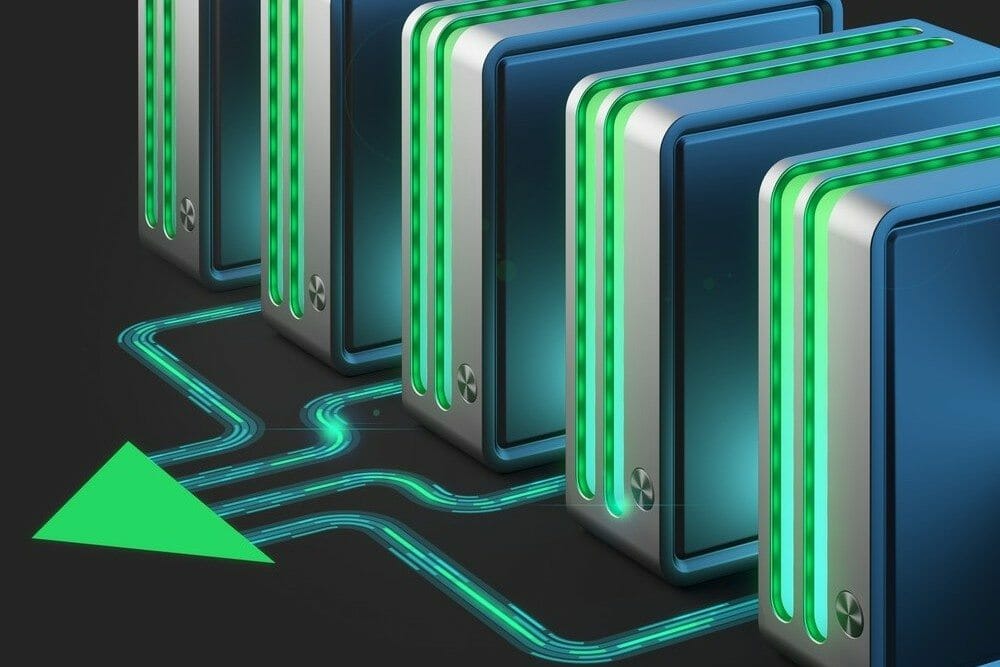Data Center Consolidation: Understanding When and Why10 min read

Today’s data center is faced with new challenges and a new sets of expectations. In an effort to cut costs and regain control of the data center environment, IT managers are asking that their environments be consolidated and be made more efficient. The conversation revolves around aligning business needs with those of IT agility. Managers and executives are trying to drive down cost and in doing so have prioritized data center consolidation projects to the top. In creating a consolidation plan, high-density server equipment, applications, virtualization technology and end-user considerations all fall under the general scope. However, when creating the actual plan, there are some key steps to follow to make a consolidation project truly effective.
Some data center environments are smaller and easier to navigate; while many others have to deal with various complexities. In trying to cope with these complex data center technologies, IT administrators have to have a clear view into their existing environment and be able to plan for the future. To gain a better understanding of how to approach an existing data center, consider the following:
- The importance of data agility and defining the underlying infrastructure. The planning process during the data center consolidation process is probably one of the most important steps for a good deployment. As mentioned earlier, the best plans are those that are designed around business goals and IT agility. In constructing a data center consolidation plan, there are several variables to be aware of. During the initial planning stages, IT administrators should focus on the following main points:
- Applications
- Data
- Servers
- Assets
- Space
- Energy
- Cooling
- The Users
- The Business
It’s clear that there are many different aspects to designing a successful data center consolidation plan. The challenge becomes clear when various data points come to life during the planning stages. This means that there is an abundance of information that has to be sorted through, analyzed and placed into a logical plan for the consolidation efforts to be fruitful. Too often, data center components are over-looked or improperly documented. This creates a misalignment in resource usage, poor data center design and future challenges which can end up costing the business some serious dollars. One of the best ways to identify the underlying components of a data center is to use asset and workload management tools. When a consolidation plan is being created, having the right data and asset management strategies will save a lot of time.
- Asset and data management. Far too often, a consolidation projects begins without a true knowledge of the environment. This doesn’t mean just physical assets either. During the consolidation plan design, the asset gathering process is crucial to the data center consolidation effort. Aside from managing the assets, it’s important to have clear understanding of the data center workloads currently running and how it will be managed moving forward. For example, virtual servers, application, data silos and other workloads all have to be taken into account with create a good asset and consolidation management plan. The moving parts that comprise a data center environment will have to be accounted for. Furthermore, the plan has to take into account how these components will be consolidated into an existing or new data center.
- Using virtualization to achieve consolidation. The push for infrastructure agility has greatly revolved around various virtualization technologies. Whether this is server, application or desktop virtualization – the virtual state can be very helpful during consolidation efforts. One of the biggest oversights during a consolidation project is the misalignment of virtual infrastructure needs. This doesn’t just mean physical server components. IT administrators have to look at large amounts of information to create a solid virtual environment.
- Making the consolidation move and understanding best practices. There’s no one set way to conduct a good consolidation project. However, there are recommendations and best practices which will make the process much smoother. In creating a data center consolidation plan, numerous components all have to play a part to make the project successful. Depending on your organizational goals – you’ll be able to define the right type of consolidation project. Still, there are some best practices to follow. When creating a consolidation plan, work with the following points:
- Documentation and communication are absolutely critical.
- Involving various IT teams and business stakeholders.
- Using management tools to support consolidation efforts.
- Identifying move groups and consolidate accordingly.
- Develop application migration strategies.
- Testing should never be overlooked.
- Training and administrator development is important.
Compliance, security and platform integration are all concerns for IT managers starting to plan a migration. There is a need for data gathering to happen up-front prior to any migration actually taking place. Without this level of planning, administrators might be moving bad practices or non-compliances from one environment to another. During the gathering process and data identification steps, it’s important to identify the various data gathering points and understand what the current system is supporting.
With more data and data center components, the consolidation of an environment can be complex. When working with various moving parts, one of the most important planning points is to understand what the environment has now, how it is being utilized and where it will fit in with the overall consolidation efforts. This doesn’t mean just simple asset management. IT administrators have to look at numerous different informational points to get a true picture of their existing infrastructure. This means looking at license compliance, software category rationalization, current hardware presence, and lots more. The ability to normalize and quantify existing data center information can go a long way in planning out a solid consolidation project. Furthermore, to accomplish such a plan, it’s important to follow some best practices, good planning points and utilize the right tools.

1 Comment
Submit a Comment
Airflow Management Awareness Month
Free Informative webinars every Tuesday in June.







All very good points. Often times there are IT assets that are determined to be redundant or no longer necessary in the new plan. These asset have value and if they are data bearing, they also hold sensitive company data. Getting the value out of these assets and protecting your customer’s data is a point that is sometimes overlooked.